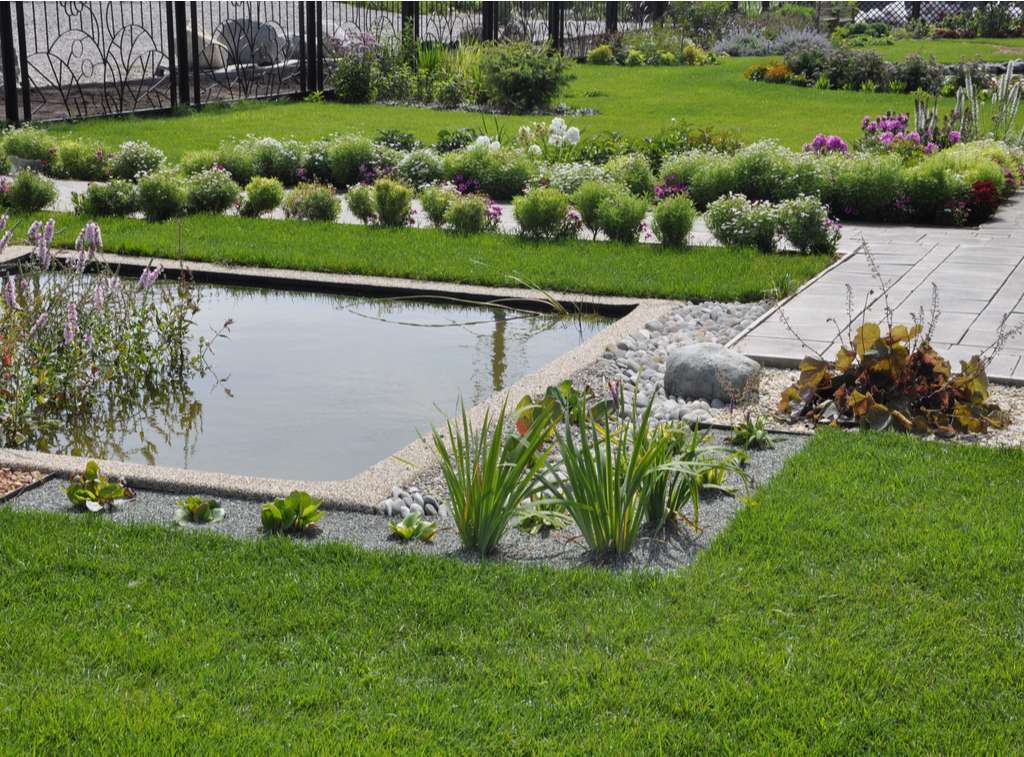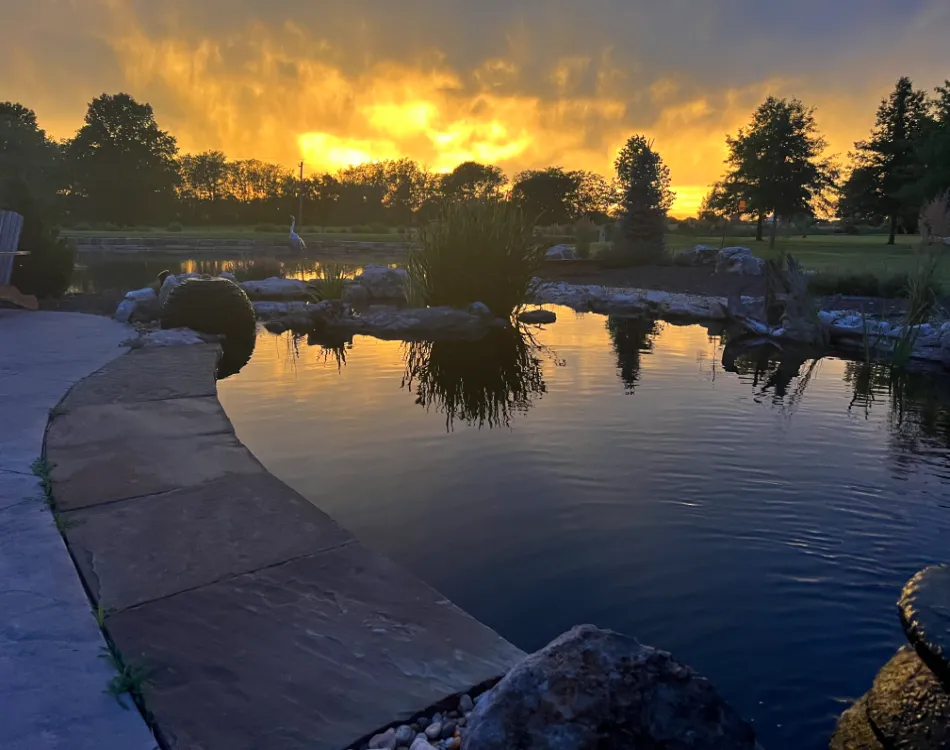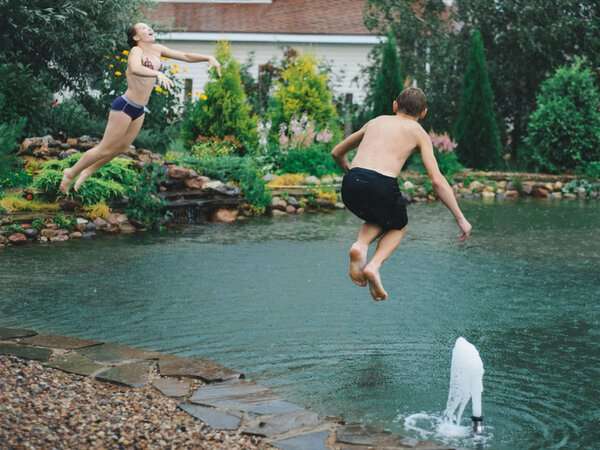Your Fellow Natural Pool Owners In Kansas City, Missouri, And The Surrounding Areas Love These Aquatic Plants

In this post, you can discover the main types of plants for natural swimming pools are. You can also find out what an example of each type is and which plants you don’t want.
The 5 Types Of Plants For Natural Swimming Pools
You can have bog, marginal, floating, emergent, and submerged plants in your natural swimming pool. Each works best in different areas, from the outer edges to the bottom.
5 Types Of Aquatic Plants For A Natural Pool
1. Bog plants
Bog additions are the best place for them to go, but you can also put them along the outer edges where the soil is moist.
These plants are fantastic because they clean the water and make your natural swimming pool look more natural.
The Blue Flag Iris is a prime example. They look elegant and delicate. You need to plant them in areas with wet soil and get a lot of sunlight. They usually bloom in late spring and early summer. Blue Flag Iris’s grow about 3 feet tall, which you can use to create a beautiful backdrop. They live longer and healthier lives when you plant a colony of them
2. Marginal aquatic plants for a natural pool
You can put these around the outer edge or a bit deeper into the water.
These types of plants can thrive in moist soil and up to about 6 inches of water.
A great example is Corkscrew Rush. It provides a unique aesthetic that can add visual interest to your natural swimming pool. You can pretty much guess what this plant looks like just by the name. Corkscrew Rushes help solidify the ground cover as they only grow about 1 foot tall and wide. They bloom small, brownish-green clusters during the summer.
3. Floating aquatic plants
These are the plants people commonly relate to water features.
While they can help keep your feature clean and clear, they may not be best for everyone. You’ll want to be careful and do your research on floating plants! A few of them, like water lettuce and hyacinth, are invasive, meaning they grow fast and efficiently. You’ll need to prune them regularly if your state government even allows you to plant them.
4. Emergent plants for a natural pool

These types of plants take root in the sides and bottom and then bloom above the surface.
One of the best examples is the Pink Sensation Lily. It’s said to be the most beautiful of all the lilies. They can bloom all season long. These emergent plants can even change colors throughout the season. Lilies can take up a lot of space, up to 5 feet.
5. Submerged Plants
These plants are the least flashy, but they provide excellent cover!
Submerged plants stay entirely under the water. You can use them to make the bottom look more natural. For you, it may be best to keep them around the edges. A few examples include hornwort and eelgrass.
Other Great Aquatic Plants For Natural Pool
Pickerelweed has violet-blue flowers that add a stunning look to any water feature. They can grow to be 2-3 feet tall. You can snack on their leaves as greens in a salad and roast their seeds.
Another fun choice is the Arrowhead Plant. While it’s primarily green foliage, Arrowhead plants grow tiny white flowers during summer. It can grow up to 2 feet tall in sunny areas. They also help keep your water cleaner and clearer.
The Plants You Don’t Want
Some water feature plants can quickly take over your feature, making it look like a swampy jungle. 5 harmful plants include:
- Naiad
- Milfoil
- Cabomba
- Curly-leaf pondweed
- Phragmites
Get The Best Plants For Your Natural Pool
You’ll love having plants for your natural swimming pool. They help keep your water cleaner and clearer, and they make it look more natural.
Contact us when you’re ready to talk about your natural swimming pool project or visit our swim ponds page for more information.



